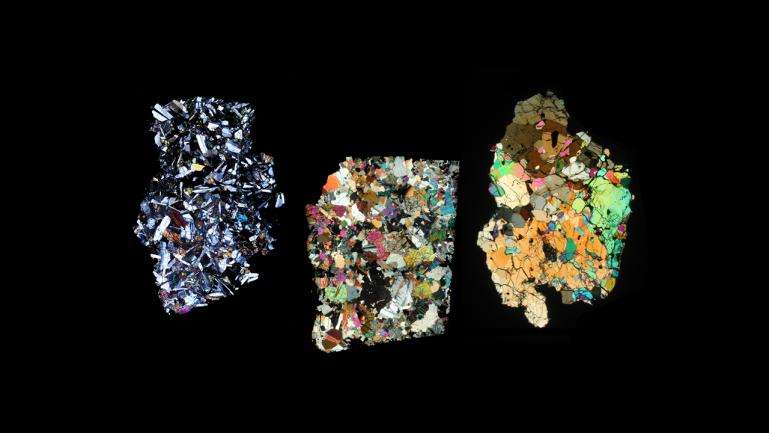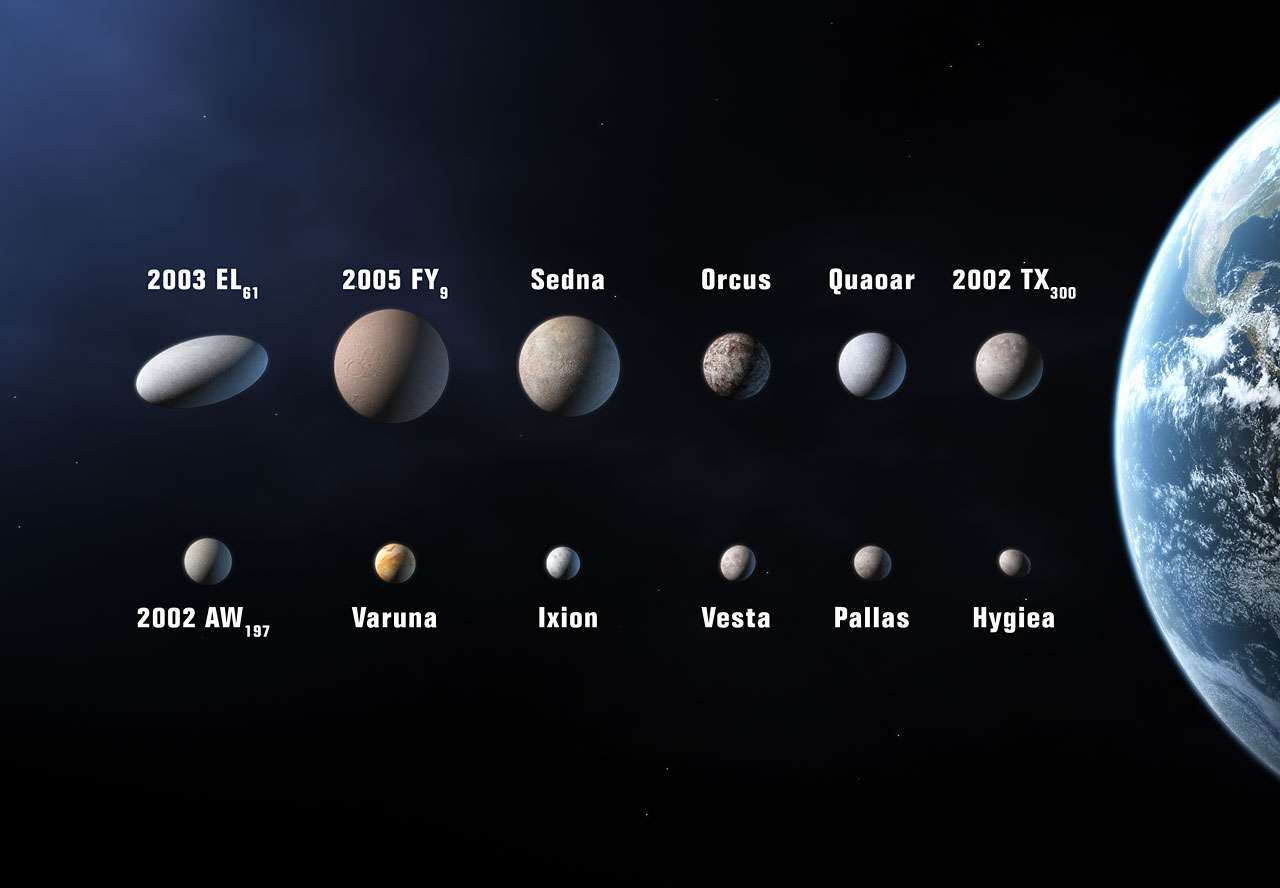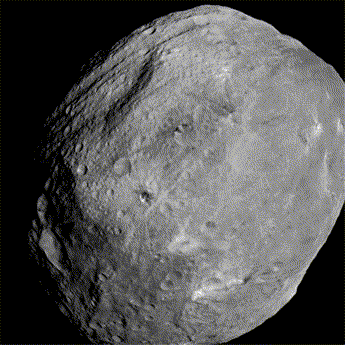It looks like you're using an Ad Blocker.
Please white-list or disable AboveTopSecret.com in your ad-blocking tool.
Thank you.
Some features of ATS will be disabled while you continue to use an ad-blocker.
3
share:

This image shows three slices of a class of meteorites that fell to Earth that NASA's Dawn mission has confirmed as originating from the giant asteroid Vesta.
The meteorites, known as howardite, eucrite and diogenite meteorites, were viewed through a polarizing microscope, where different minerals appear in different colors. The texture of the rocks reveals that they crystallized at different rates.
The image on the left comes from a meteorite named QUE 97053 (Antarctica), which is basaltic eucrite.
The image in the middle comes from the Moore County (North Carolina) cumulate eucrite.
The image on the right comes from a diogenite meteorite named GRA 98108 (Antarctica).
Source
Originally posted by BiggerPicture
which one is it...
That's a good question and, coincidentally, there was an article on the NYT space and cosmos section about this question:
Confirmed: Vesta, the second largest of the asteroids, is a runt planet.
Observations by NASA’s Dawn spacecraft show that Vesta formed within the first few million years of the solar system, that its surface is in places as bright as snow and in others as dark as coal, and that it contains an iron core that may have even briefly generated a magnetic field — all very planetlike features.
Both Vesta and Ceres, the largest asteroid and the Dawn’s next destination, are also heavy enough that gravity has made them round.
“The Dawn team finds itself calling these things planets all the time,” Christopher T. Russell, the mission’s principal investigator, said in an interview.
In the current parlance of astronomers, however, Vesta and Ceres, like Pluto, are dwarf planets, not planets.

So yes, seems like they finally agreed to define Vesta as a dwarf planet. In the NYT paper, they define the word "planet" as follow:
...set by the International Astronomical Union in 2006, not only takes into account size and appearance, but also requires that a planet be the gravitational bully in its orbit. While Vesta and Ceres are round, they have not vacuumed up or pushed away thousands of other rocks in similar orbits.
Interestingly, I have found the report of the 2006 IAU session about this very question where members gathered at the 2006 General Assembly agreed that a "dwarf planet" is a celestial body that:
(a) is in orbit around the Sun,
(b) has sufficient mass for its self-gravity to overcome rigid body forces so that it assumes a hydrostatic equilibrium (nearly round) shape,
(c) has not cleared the neighborhood around its orbit, and
(d) is not a satellite.
(a), (c) and (d) were OK, but not (b).
They also said:
A new distinct class of objects called "dwarf planets" was also decided. It was agreed that "planets" and "dwarf planets" are two distinct classes of objects. The first members of the "dwarf planet" category are Ceres, Pluto and 2003 UB313 (temporary name [Note by me: name is Eris as for now]). More "dwarf planets" are expected to be announced by the IAU in the coming months and years. Currently a dozen candidate "dwarf planets" are listed on IAU's "dwarf planet" watchlist, which keeps changing as new objects are found and the physics of the existing candidates becomes better known.
The "dwarf planet" Pluto is recognized as an important proto-type of a new class of trans-Neptunian objects. The IAU will set up a process to name these objects.

Oddly, not a word at this time about Vesta on the IAU session, even considered as an asteroid, but wikipedia provides an more thorough explanation for this:
Vesta's shape is relatively close to a gravitationally relaxed oblate spheroid, but the large concavity and protrusion at the pole combined with a mass less than 5×1020 kg precluded Vesta from automatically being considered a dwarf planet under International Astronomical Union (IAU) Resolution XXVI 5. Vesta may be listed as a dwarf planet in the future, if it is convincingly determined that its shape, other than the large impact basin at the southern pole, is due to hydrostatic equilibrium
.... that reproduce the (b) point of the definition of a dwarf planet in the 2006 IAU session.
However, in the NYT paper, they do not really explain exactly why Vesta should be considered as a dwarf planet for now, do they succeed in proving that its shape is finally due to hydrostatic equilibrium?
Maybe in the yesterday's "Science" article there was a more thorough explanation...
edit on 12-5-2012 by elevenaugust because: (no reason
given)
new topics
-
Did my Trump wins big
US Political Madness: 18 minutes ago -
Will Peanut the squirrel be enough to sway votes
US Political Madness: 2 hours ago -
National Guard on Standby in Many States as America Faces Tense Election Day
US Political Madness: 8 hours ago -
Hoax bomb threats linked to Russia target polling places in multiple states, FBI says
US Political Madness: 8 hours ago
top topics
-
Yellow Brick Road found in the Ocean…
Fragile Earth: 14 hours ago, 12 flags -
National Guard on Standby in Many States as America Faces Tense Election Day
US Political Madness: 8 hours ago, 8 flags -
Hoax bomb threats linked to Russia target polling places in multiple states, FBI says
US Political Madness: 8 hours ago, 6 flags -
Will Peanut the squirrel be enough to sway votes
US Political Madness: 2 hours ago, 6 flags -
Did my Trump wins big
US Political Madness: 18 minutes ago, 1 flags
3
